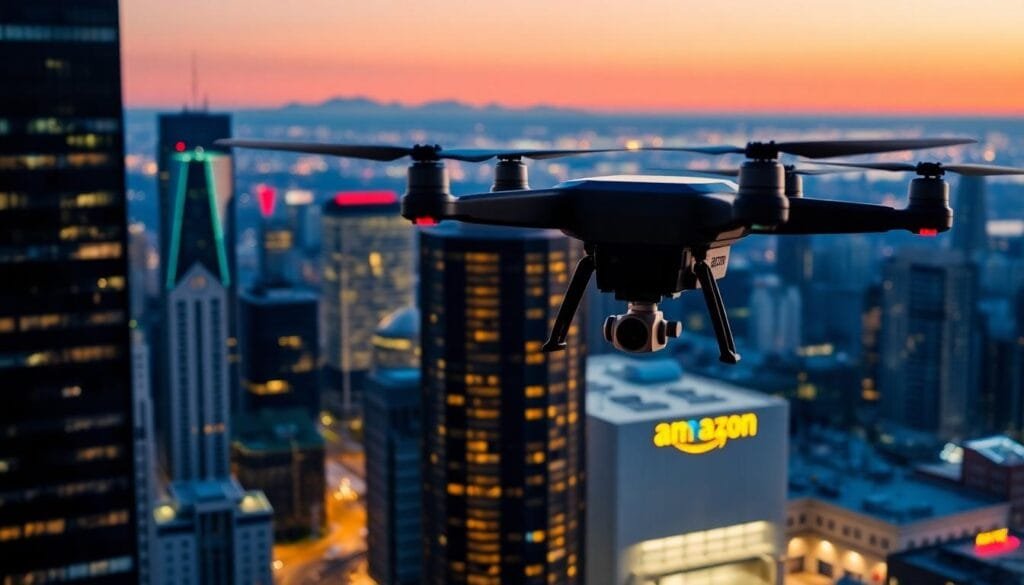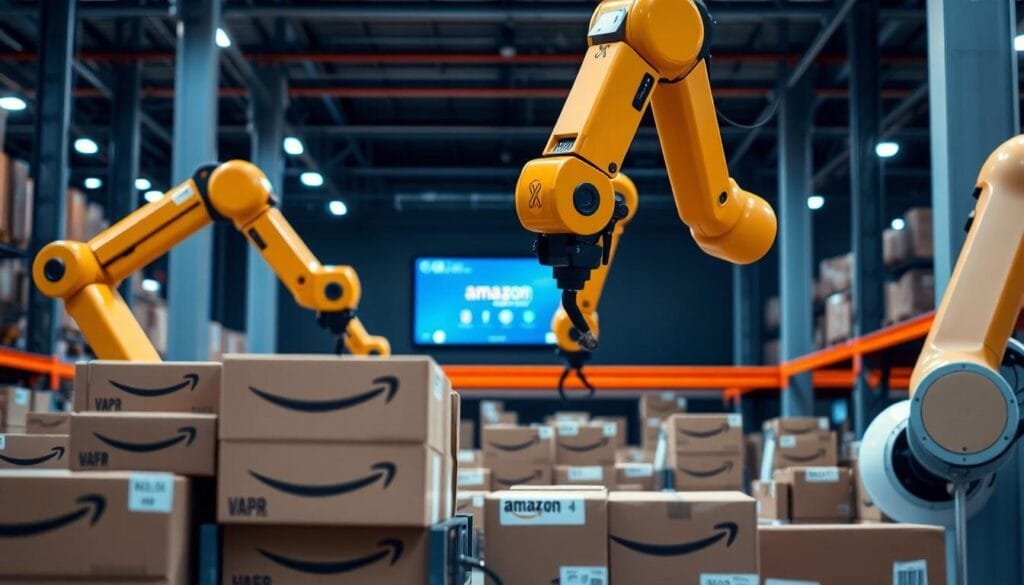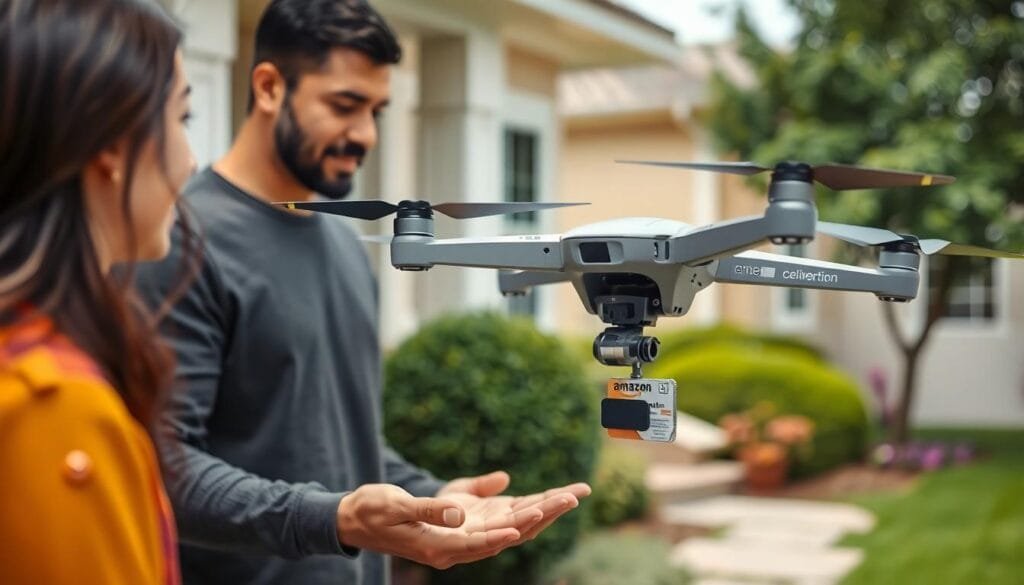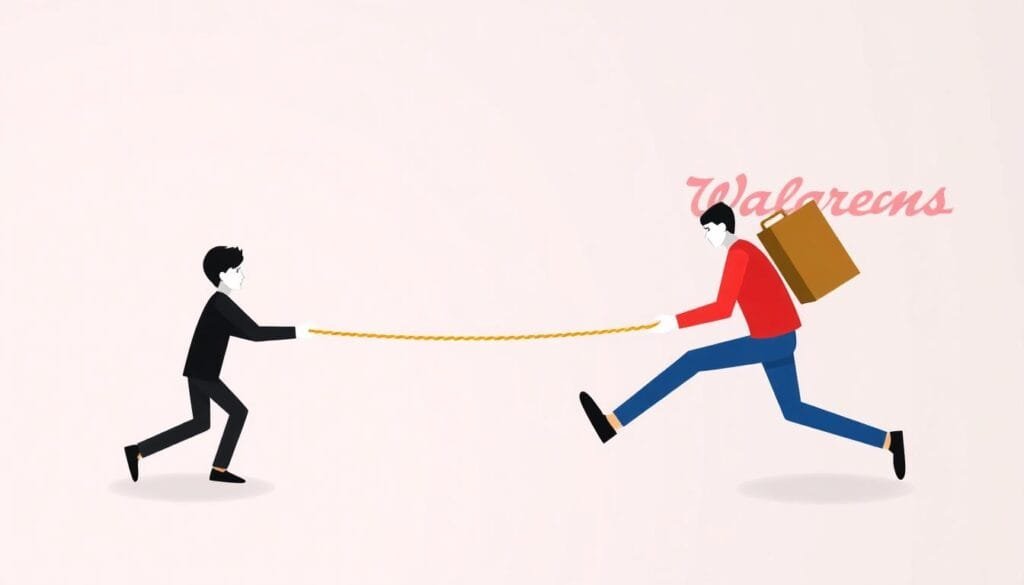Okay, so imagine getting those emergency meds or baby supplies you desperately need without the whole “wait 3-5 business days” nightmare. Amazon’s same-day delivery isn’t just making life easier—it’s completely flipping the script on how entire industries function. And I’m not just talking about impatient shoppers (though, let’s be honest, that’s definitely me). This service combines smart tech with serious customer understanding in a way that’s sending ripples through retail, healthcare, and the entire logistics world.
Want the full breakdown of Amazon’s delivery strategy? Check out this video that digs deeper than I possibly could in one article.
The Scale of Amazon’s Same-Day Delivery Expansion

Amazon’s same-day delivery isn’t just convenient—it’s redefining what we even consider “convenient” anymore. They’re aiming to cover half the U.S. population by the end of 2025, which… I mean, that’s not just meeting expectations, that’s basically telling us our old expectations weren’t ambitious enough. Let’s look at how they’re pulling this off.
Current Scope and Future Goals
Amazon is focusing on America’s busiest cities first (shocking, I know). By adding 20 new urban areas to their same-day network, they’re on track to reach almost half the country by next year. We’re talking major markets like Boston, Dallas, Minneapolis, and Philly joining their already impressive coverage of 90+ metro zones.
What makes this interesting isn’t just the geography—it’s the timing. Amazon has aligned this expansion with their tech advancements in logistics and automation. The long-term vision? Making same-day delivery feel as normal as checking your phone first thing in the morning. For customers, this means getting anything from groceries to gadgets within hours.
Prime members get the best deal here with free same-day shipping on eligible items. And Amazon’s pharmacy service is following suit—promising same-day prescription deliveries in select cities. This has been life-changing for people who can’t wait days for important medications. According to Fierce Healthcare, Amazon’s pharmacy division is expanding substantially to support same-day prescription delivery to these new locations.
Amazon wants ultra-fast delivery to become the standard—which, let’s be real, is going to make all of us even more impatient than we already are.
Leveraging Technology for Speed and Efficiency

So how does Amazon actually pull off this massive operation? Two words: ridiculous technology. Actually, more specifically: VAPR technology and MK30 drones. These aren’t just cool-sounding acronyms—they’re the backbone of the whole operation.
- Dynamic Package Sorting with VAPR Technology: VAPR (Vision-Aided Package Routing) software has transformed package processing. Instead of semi-manual sorting (which was slow, let’s be honest), VAPR uses computer vision to quickly identify delivery routes, cutting processing time almost in half. This means your stuff leaves warehouses faster and actually reaches you when promised.
- Drone Deliveries with MK30: If you want to feel like you’re living in the future, this is it. These MK30 drones are designed to deliver small packages—think medication or emergency supplies—directly to your doorstep in under 30 minutes. Not just convenient, but actually revolutionary for last-mile delivery challenges.
Amazon’s also using AI to make sure local warehouses stock what nearby customers actually want. By using artificial intelligence, they’re reducing wasteful shipping and improving availability. An article from Channel Engine shows how these advancements perfectly align with their same-day delivery expansion.
Impacts on Healthcare Accessibility

Amazon’s same-day delivery is smashing barriers in healthcare access. In situations where time matters—like, really matters—Amazon’s quick turnaround can be the difference between a minor inconvenience and a major health crisis. By combining advanced logistics with customer-first policies, they’re stepping into a role traditional pharmacies have struggled with for years.
Convenience for Patients and Prime Members

For people who depend on regular medication, waiting days for prescriptions just isn’t an option. Amazon’s same-day delivery completely transforms this experience. Prime members get perks like free delivery, eliminating the stress of physically visiting a pharmacy. This isn’t just convenient—it’s life-changing for people managing chronic conditions or mobility issues.
Think about it—a parent with a sick kid doesn’t have to bundle up and drag themselves to a pharmacy. Instead, medication arrives at their door in hours. In some cities, customers can order prescriptions as late as 4 p.m. and have them by 10 p.m., according to Amazon Pharmacy’s announcement. That kind of service turns potential emergencies into manageable situations.
Plus, the integration with Amazon One Medical gives Prime members access to 24/7 virtual healthcare consultations. From diagnosis to medication delivery, Amazon’s creating a seamless healthcare loop that starts with virtual clinicians and ends with doorstep delivery.
Addressing Challenges in Traditional Pharmacies
Traditional pharmacies face all sorts of problems—delayed shipments, understocked inventory, you name it. These issues lead to frustrated customers and treatment delays. Amazon tackles these head-on by combining their massive logistics network with advanced automation.
Many pharmacies are located in suburban or rural “pharmacy deserts” where access is limited. By placing fulfillment centers closer to high-demand areas, Amazon’s solving this problem directly. Their same-day delivery drastically cuts waiting times for critical medications—a change that could redefine care standards, especially in underserved areas. According to a USA Today report, Amazon is investing in urban hubs while expanding into core metro zones, making medication access more reliable than ever.
Amazon hasn’t just streamlined operations—they’ve made prescriptions more affordable with options like the Amazon RxPass subscription. This makes costs clear upfront, eliminating those nasty surprises at checkout.
This isn’t just a logistics upgrade—it’s a complete reimagining of the pharmacy model. And while CVS and Walgreens are scrambling to catch up, Amazon’s solution-driven approach is setting new standards for healthcare accessibility.
Amazon’s Strategy and Competition in the Market

Amazon’s aggressive expansion into same-day delivery isn’t just about retail—it’s a calculated move into healthcare. The company is advancing on multiple fronts, focusing on strategic acquisitions and technological infrastructure to revolutionize access to essential services. Let’s look at how they’re integrating into healthcare and shaking up the competition.
Acquisitions and Integration into the Health Ecosystem
In 2018, Amazon acquired PillPack for $750 million—a clear signal they were serious about dominating the pharmacy market. Unlike traditional pharmacies, PillPack delivered pre-sorted medication doses by mail, focusing on convenience for people managing multiple prescriptions. By integrating this into Amazon Pharmacy, they now offer same-day delivery of critical medications in select cities.
This acquisition laid the groundwork for Amazon’s entry into healthcare. By leveraging their logistics network and tech capabilities, they’ve started addressing inefficiencies in prescription delivery. With Amazon Pharmacy, Prime members can now receive prescriptions within hours—a huge advantage for people with chronic conditions or limited mobility.
Amazon didn’t stop there. They’ve also introduced services like Amazon Care and partnered with One Medical for virtual consultations. These moves create a seamless healthcare experience from virtual care to doorstep delivery. More insights on Amazon’s post-acquisition strategy are covered in this CNBC article.
As Amazon scales this model, they’re improving access for people in pharmacy deserts and urban areas where traditional pharmacies are scarce or overwhelmed. These efforts are completely redefining healthcare access in terms of speed and efficiency.
Competitors’ Responses to Amazon’s Expansion
Amazon’s moves have forced traditional players like CVS, Walgreens, and Rite Aid to rethink their business models. These companies, historically dependent on foot traffic, are now investing heavily in digital platforms and home delivery. Walgreens has partnered with third-party logistics companies for same-day prescription delivery, while CVS Health is doubling down on integrating pharmacy and retail with its HealthHUB locations.
Despite these efforts, competing with Amazon is tough. Amazon’s scaling ability is unmatched—from AI-driven inventory optimization to drone delivery experiments, they operate with logistical capabilities traditional pharmacies simply can’t match. This tech advantage allows Amazon to expand same-day delivery while reducing costs. You can explore more implications via the American Hospital Association.
Competitors are also exploring subscription services to retain customers. CVS’s CarePass offers free same-day delivery and prescription discounts for members. But even these initiatives struggle to match the seamlessness of Amazon’s Prime-based services.
The battle between Amazon and traditional pharmacies highlights broader shifts in consumer expectations. Faster, cheaper, and more efficient delivery is becoming non-negotiable. As competition intensifies, only companies willing to innovate at Amazon’s scale will remain relevant.
Ethical, Privacy, and Regulatory Concerns

Amazon’s same-day delivery is undeniably convenient, but its rapid expansion raises some serious questions about ethics, data privacy, and regulatory compliance. These aren’t abstract corporate issues—they directly affect real people and communities every day.
Data Privacy in Healthcare Delivery
Handling sensitive health data is central to Amazon’s move into same-day prescription delivery. But it’s also risky. Customers trust Amazon with their most personal information—medical history, prescriptions, payment details. With data breaches making headlines regularly, is this trust well-placed?
Amazon has faced data handling scrutiny before. In June 2023, they paid $25 million in fines for alleged privacy violations related to Alexa and Ring devices (source). While those cases may seem unrelated, they highlight Amazon’s track record with data security—raising concerns about patient confidentiality in their healthcare expansion.
To address these concerns, Amazon claims to use strict safeguards, including HIPAA-compliant systems and encryption. But trust isn’t built overnight. As they expand healthcare services, they’ll need to be transparent about how they collect, store, and use sensitive health data. Comprehensive audits might be just the first step in building confidence.
Critics argue that Amazon’s business model relies heavily on data-driven personalization and ad targeting. Can such a company truly draw a hard line on patient privacy? After all, your data isn’t just numbers—it represents your daily decisions, habits, and now your health.
For more insights on Amazon’s impact on privacy and ethics, consider exploring The Amazon Problem: Privacy, Data, and Antitrust Law.
Balancing Market Expansion with Fair Competition
Amazon isn’t just dominating e-commerce—they’re redefining how entire industries operate. While this drives innovation, it raises questions about fair competition. At what point does success become monopolistic behavior?
Critics claim Amazon’s scale discourages new competitors in healthcare delivery. Traditional pharmacies like CVS and Walgreens struggle to match their technological and logistical efficiency. Smaller, independent pharmacies barely stand a chance. This concentration of power raises antitrust concerns, especially as Amazon integrates services like Amazon Pharmacy and One Medical into their ecosystem.
Another ethical dilemma involves contractor rights within their delivery network. Research indicates procedural injustices for gig workers who handle same-day deliveries (source). Are these workers fairly compensated and protected? Or are they collateral damage in Amazon’s convenience race?
Government regulators have started questioning Amazon’s impact on industries they dominate. Discussions about improving antitrust laws, particularly regarding big tech’s data practices, have taken center stage. The question remains: Can Amazon expand into healthcare and other vital industries while maintaining fair competition?
For a broader analysis of Amazon’s ethics and social responsibilities, check out Amazon Ethics and Social Responsibility. As the company grows, society will demand more accountability to ensure innovation doesn’t come at the cost of fairness or privacy.
The Future of Convenience and Expectations
Amazon’s same-day delivery represents a fundamental shift in how we think about service, speed, and access. With their ambitious expansion targeting half the U.S. population by next year, they’re not just meeting our existing expectations—they’re completely reshaping them.
From integrating AI solutions to deploying cutting-edge tools like VAPR and drone technology, Amazon isn’t playing by the old rulebook—they’re writing a new one. For patients, Prime members, and everyday consumers, this means entering a future where immediate access becomes the baseline expectation rather than a premium service.
As Amazon continues scaling this model, businesses across sectors will need to adapt or risk becoming obsolete. The ripple effects will likely transform our interactions with services across healthcare, retail, and beyond for years to come.
What do you think about our growing reliance on same-day delivery? Has Amazon’s rapid delivery changed your expectations when shopping elsewhere? How do you balance the convenience against the potential privacy concerns? Share your thoughts in the comments!
Disclaimer: PickaryHub may contain affiliate links through which we earn a commission, but these links come at no additional cost to you as a user.
FAQ’s:
❓ How does Amazon’s same-day delivery affect local businesses? (Click to Expand)
▶ Amazon’s same-day delivery creates both challenges and opportunities for local businesses. While it increases competition, it also drives innovation in local delivery services and encourages businesses to focus on unique in-person experiences that can’t be replicated online.
❓ Is Amazon’s same-day delivery environmentally sustainable?
▶ The environmental impact of same-day delivery is complex. While consolidating deliveries can reduce overall carbon emissions compared to individual shopping trips, the pressure for speed can lead to partially-filled delivery vehicles and increased emissions. Amazon has committed to net-zero carbon operations by 2040 through their Climate Pledge but continues to face criticism about their current environmental footprint.
❓ How does Amazon select which areas receive same-day delivery service?
▶ Amazon prioritizes high-density urban areas with sufficient customer demand and existing logistics infrastructure. Population density, average order values, and proximity to fulfillment centers are key factors in determining expansion locations.
❓ What happens if my same-day delivery doesn’t arrive on time?
▶ For Prime members, Amazon typically offers compensation for late deliveries, which may include partial refunds, shipping credits, or extensions to Prime membership. Non-Prime customers may receive shipping fee refunds for paid expedited deliveries that arrive late.
❓ Can I track my same-day delivery in real-time?
▶ Yes, Amazon provides real-time tracking for most same-day deliveries through their app and website. In select markets, they’ve implemented map tracking similar to ride-sharing services, allowing customers to see the delivery driver’s location as they approach.






